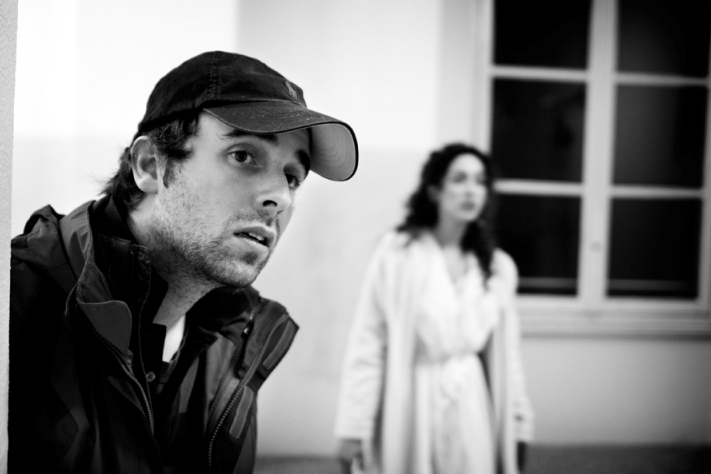
By Claire Bueno
Matteo Bernardini has all the ability you need for a director; a fertile imagination, a unique sense of style, and the talent to captivate an audience with mesmerising story telling.
Remember the tongue and cheek faux porn Moby video ‘Ooh Yeah’? ‘Ooh Yeah’ indeed! As Bernardini in the infancy of his career established himself as an exciting talent, the video with the ability to laugh at itself, firmly stated that humour aside this was a filmmaker who took his craft very seriously.
Microsoft clearly saw this as Bernardini was the only Italian, and only director chosen as Brand Ambassador when they launched their Windows 7, ‘Generation 7’ campaign.
Bernardini’s magnetism as a director has attracted acting talent such as Game of Thrones Oona Chaplin and ‘Beckett Prodigy’ Lisa Dawn. And from behind the camera Bernardini has worked with Christopher Nolan, Peter Greenaway, Matthew Vaughan and opera director Robert Carsen.
Labelled as Italian Wired Magazine’s ‘The Next Big Thing’, I wanted to find out for myself what makes this extraordinary director tick!

The first and obvious question is what made you want to become a director?
I don’t really know. It all started very early on. At around five years of age I told my parents that I wanted to work in Animation (mostly because I loved to draw and I was a voracious watcher of kids’ cartoons on TV). Then I began to say I wanted to become a director; that was around eight, pretty out of the blue. I took that decision way before I even knew what that meant. Luckily for me, it turned out I could do it and it turned out well, but I still remember the insecurities and the ambiguous thrills I felt when I had to film my very first short film while at film school in London, all due to the expectations I had built over the years.
For any audience investment in a film, it has to start with a good story, where does your inspiration come from? Do you believe as a filmmaker you should consciously remain open to ideas? Or do you think as a creative that this is something that comes naturally?
When looking for inspiration, I always start from Literature, Pictures and Music. These are the three realms I plunge myself into.
I have a humanistic background, so Literature is a dear friend to me. The great Werner Herzog is used to say: “If you want to become a great director, read”.
I understand what he means. I don’t think you can be a good filmmaker if you don’t have a good cultural background. Knowing the classics, studying and analyzing them not only is exceptional food for thoughts but it also helps venturing into the meanderings of the Arts.
The World of Culture at large is in constant dialogue with itself: Poetry informs Music that informs Painting that informs Sculpture, etc.
The more you know about it, the more you will feel at home within it, the more you will be able to build the solid grounds your creations will lie upon.
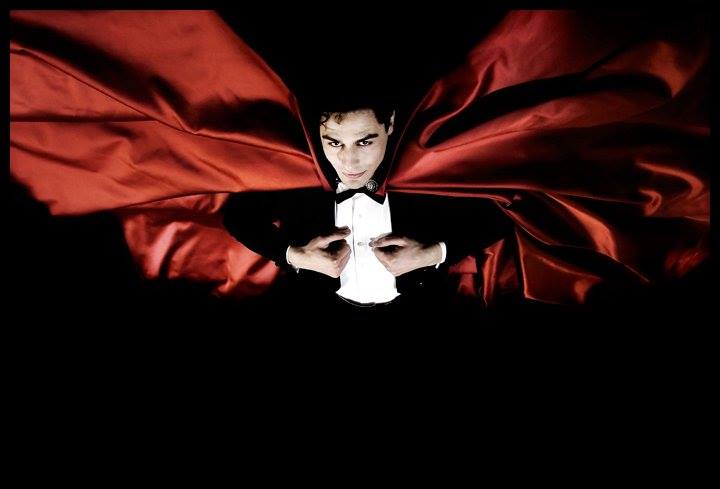
I research illustrations and paintings – as well as photography books – whenever I need some specific visual references I need to rely upon. Occasionally a specific image I see becomes the main drive behind my works, or at least it sediments into my imagination and by the end of the development process it will have turned into something else. I absorbed it and made it mine.
Many of these suggestions are sent directly to my collaborators: I love producing mood boards and I think they are an extraordinary vehicle to inform your crew about the exact mood, look and style you intend to adopt on a project. It is the first chance you have to share the world you created inside your head with those who will help you turn it into a reality.
Music represents another step within my inspirational process: I use it to trim the narrative. Being the most mathematical of all arts, I find it very useful to start envisioning entire sequences, thus relying on its tempos in order to define specific moments from my future films: I will put a record on and, following the track, I will come up with the visual enfolding of the narrative.
Some of the most interesting sequences in my projects were born this way. However, ideas don’t always come naturally. Not for everybody. Even an extraordinary prolific creative can have (and usually has) moments of despair where the page remains empty. If there is something I learnt since I am doing this profession, it is that we must be constantly open and as elastic as possible. And patient: creativity doesn’t work the same way for everybody; sometimes an entire project appears on the page in an afternoon and some other it takes months to come up with one decent plot twist.
What I keep repeating myself is that we must become aware of the fact that creativity is an organic process, and as such it is constantly transforming and is never the same: this is all very easy to say but quite hard to accept, at least for me.
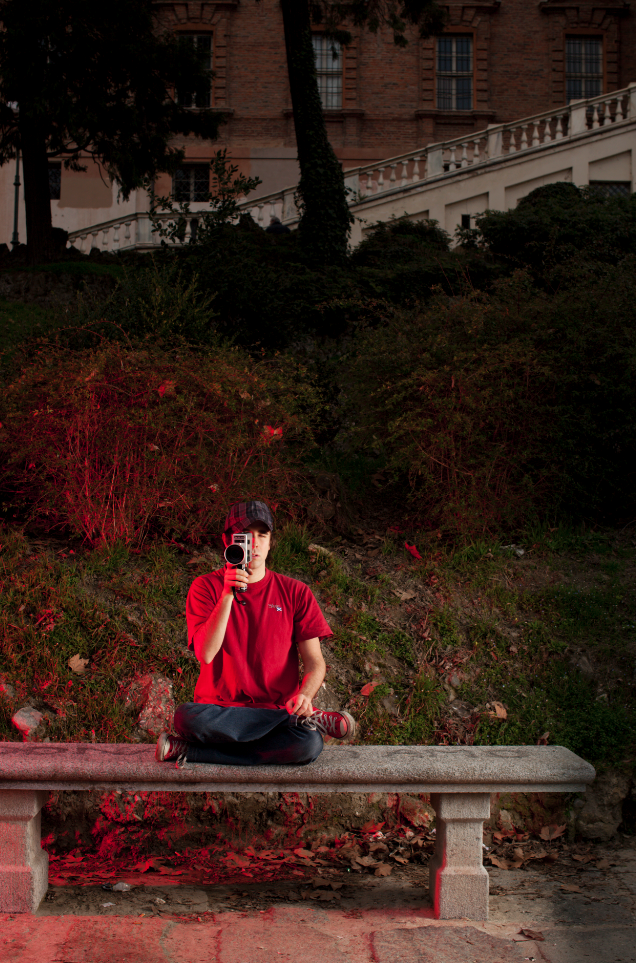
Music feels very influential in helping you form the narrative of your story; can you tell us more about that?
I’m so happy you noticed! Thanks.
Music has always played a very important role in my life. As I child, I used to sing in a children’s choir, through which I took part into opera productions (including one where the amazing special effects were conceived by the great Carlo Rambaldi, who created the character of E.T. for Spielberg). Later on, I worked as an assistant director on Operas and had the chance to work with the extraordinary Robert Carsen, whom I consider a mentor of mine. All of these experiences – paired with having been a huge W.A. Mozart and Richard Strauss fan my whole life – helped me forming my music taste and knowledge. I think that the ability to choose the right music truly defines you as a director, showing whether you are good or not at your job. If you are working with pre-existing music, I believe that you should work at two different levels at once. First, your choice has to be determined on an emotional/practical level, that is to say: “Is this track going to fit on these sequences?”. At the same time you need to work on another level, the intellectual one: once you made sure the track ‘fits’ within your film, you should research its history in terms of both composition and performance. Whether it is classical or popular music, the most interesting use of it has always been done taking care of all these elements at once.
When I had to choose the tracks for my commercial “The Paper Balloon”, I chose the second movement from Schumann’s Piano and String Quintet because – besides its unequivocal emotional impact – it possessed a cyclical structure that has a lot in common with the experience of foster care: children leave their homes to spend a period of time with another family, in order to be (ideally) re-inserted into their original family context.
When I began working on “An Afterthought”, I knew I wanted to underline my idea of Barrie’s Peter Pan story being not the typical product of English Children Literature, but rather a work that had more similarities and undertones in common with the Mitteleuropean culture of the time. Therefore, when it came to music, Mahler’s Fourth Symphony (surprisingly underused in film scores) turned out to be the perfect choice: the melodic mood set by the composer ideally matched the atmosphere of my film and – on top of that – the symphony represents a child’s naïve and odd vision of Heaven, which vibes with a certain interpretation of the Neverland and its equally idyllic and darker aspects.
“The odd and fascinating thing about being a director is that – even though this is definitely a collaborative profession – at the end of the day you are the only one who knows how the film is truly going to be/look like.”
There is often a dry humour woven into the fabric of your story telling which is really engaging, can you share with how important having a sense of humour is to you and your work?
That is something that always came natural to me. Especially in my earlier works, I wanted to ‘season’ my storytelling with a touch of irony and humour. It was almost instinctual and I felt it helped balancing the narrative, making it even more interesting.
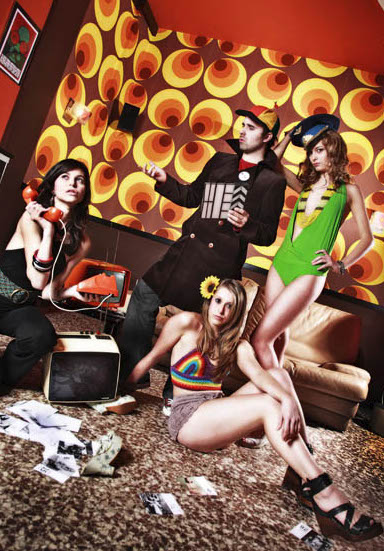
It may give the impression that you are not taking yourself too seriously, but it can certainly elevate the artistic quality of your work, through its different nuances: bitter irony, tender irony, devilish irony, cynical irony. There is so much you can do with an apparently ‘light’ rhetorical device such as this, which – if used properly – can become such a sharp (and even devastating) tool, if not a weapon.
Possibly growing up with Roald Dahl’s Tales of the Unexpected and with Edward Gorey’s wonderful visual stories is what made me love their playfully cruel form of irony and humour.
Humour itself presents many different shades: as the great Italian novelist and playwright Luigi Pirandello wrote, we tend to consider ‘humorous’ everything that generates laughs and that is related to comedy; however, he points out that humour is far deeper than that, it is the actual feeling of the contrary. Something that should be but cannot, which means that humour posseses a more reflexive side that forces the spectators to question their own laugh, their own amusement.
I find this terribly exciting.
More generally, I love challenging myself with a varied scope of emotions, playing with them in order to create the sensitive fabric of my stories. It is all about having a sense of rhythm, which you acquire through experience: knowing when to create tension and nail your audience to their seats, then helping them distend, moving them to tears.
I have profound admiration for those film that can make you feel such a varied spectrum of feelings: Charlie Chaplin’s talent is largely blessed with this gift, as is Amodovar’s feature All about my Mother. I remember watching this film in a movie theatre as a kid and being blown away by the director’s extraordinary ability to make me roar with laughter and – two minutes later – to make me tragically burst into tears. And so on, back and forth, till the end credits.
Your films are really atmospheric, your use of shadows to build tension and create a visual aesthetic are truly stunning. What emanates is that you have a true respect for lighting and have a real love affair with it?
As I said, some of my greatest inspiration comes from the visual arts, mostly paintings and illustrations.
The pictorial component is essential for me, as a filmmaker; it is also as equally important to me to know how to tame it and make it one of the functional aspects of my visual storytelling, without finding myself a victim of pure aesthetics. There is hardly anything more irritating than a film with wonderful images but no soul.
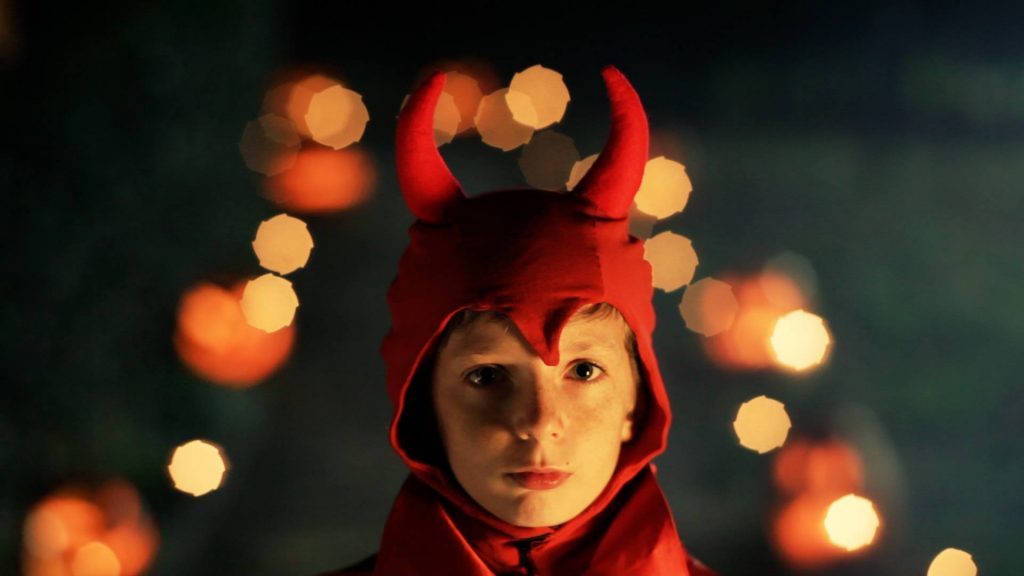
I’m used to produce rather detailed mood boards, where I insert all sorts of visual references for very specific aspects of the film, whether it is the general mood, the looks of specific characters, the settings, the lighting etc.
I need my collaborators to be on the same page as I. The odd and fascinating thing about being a director is that – even though this is definitely a collaborative profession – at the end of the day you are the only one who knows how the film is truly going to be/look like, since it is playing incessantly inside your head; however, you have to make sure that the people who are working with you get as many information as possible in order to help you get your vision made.
A fundamental collaborator in this regard is the Director of Photography: I have been blessed working with truly amazing talents in this regard.
Let’s not forget it: the key to success in filmmaking is to surround yourself with people who are much better at their specific craft than you could ever be; your duty is to inform them about your vision and to be able to communicate what you want and – even more importantly – what you do not want.
The cinematographers I have worked with varied in terms of age and experience, but they were all amazing: from Oscar-winning Italo Petriccione to Alessandro Dominici, to Giovanni Troilo, Federico Torres, Stefano Palmesino and Valerio Sacchetto.
Their role is fundamental: they shaped the lighting atmosphere of my films, which in many ways is one of the main calling cards for their quality and effectiveness because it represents the aesthetic reflection of the main themes and symbology of my works.
You’ve directed a number of period pieces, which feels like you are paying tribute to the golden age of film making?
There is definitely that component. I think the Golden Age of Filmmaking truly showed the wonderful artistry of film craftsmanship.
I am not saying this is fading away, but it is definitely being momentarily neglected by many. The whole art of blocking is a clear example: today the prevailing aesthetic seems to be the documentary-hand-held-camera-shaking type. Which is fine. I don’t want to sound a snob about it. It can be a very effective and fascinating way to tell a story: I think all styles of filmmaking are fine as long as they are the best way to communicate a specific narrative.
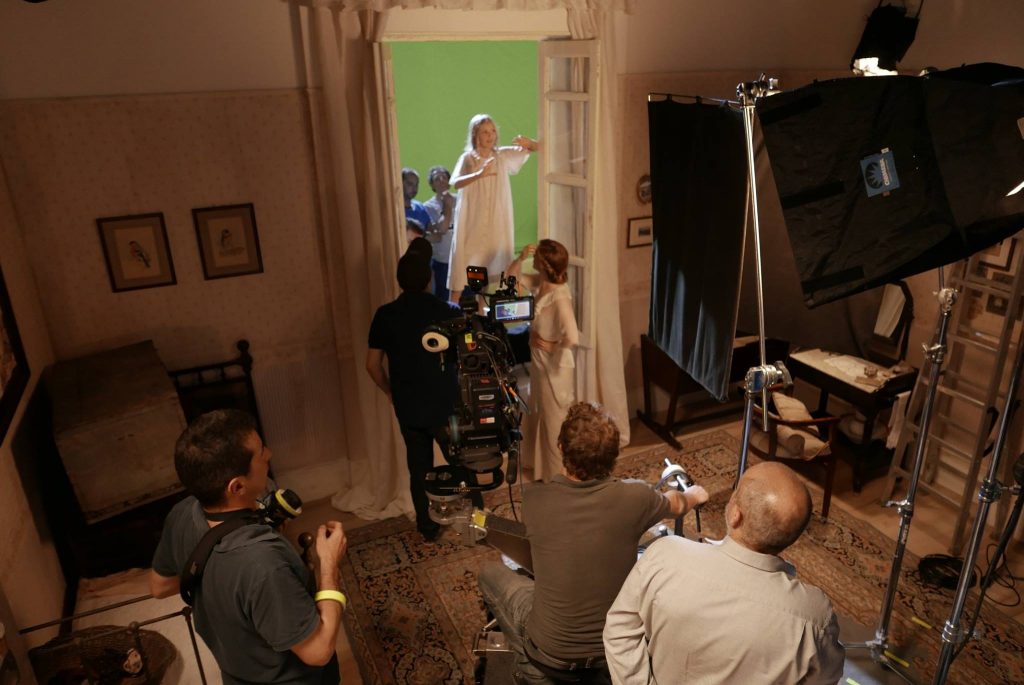
The reason why this documentary style is prevalent is also due to budget constrictions: being on a tight budget hardly ever rhymes with the lush aesthetics Classic Cinema is known for and requires. That doesn’t mean it can’t be done: it is simply going to make your whole experience much harder and way more challenging.
Speaking of which, I really like to challenge myself artistically: what is more stimulating than recreating a world, a historic dimension that doesn’t exist anymore, and make it believable to your audience?
Period pieces are tricky: in order to work, every single element needs to be in the right place at the right time. I’m not simply referring to the quality of the acting and of the overall formal aspects (that is necessary for every film); I’m talking about making choices that are informed by a rigorous research. You need to study several paintings and (if there are any) photographs from the period you are going to show, and focus on the faces. Different societies, lifestyles and eating habits impacted on people’s features immensely. Nowadays we hardly have the same faces we had in the early 1900s.
Besides looking for great talent (which is always pivotal), you also have to look for the right appearance: you cannot have a ‘modern face’, it will simply destroy the magic. Same for the right hairstyle and for the right costume. If you want to do a good job, all of these aspects need to match with one another, in order to create that magic illusion that allows your audience to be transported back in time. For example, small things like contemporary elements in an otherwise period hairstyle will literally ruin your effort and destroy the illusion.
How has the evolvement in technology over the years helped you as a filmmaker and in turn help you evolve?
I was lucky enough to work on both film and digital. Different supports indeed, but both can guarantee excellent results if handled properly. A talented cinematographer can shine in both cases.
I am fully aware of the diatribe regarding Film vs Digital, and I personally appreciate both. Most of the times, the reason one is chosen over the other is merely practical.
Medium-high-sized project are disappearing and today’s market is mostly characterized by big budget films and micro-productions. The latter can hardly afford film – it is not impossible, but it is usually dropped in order to allow other production expenses.
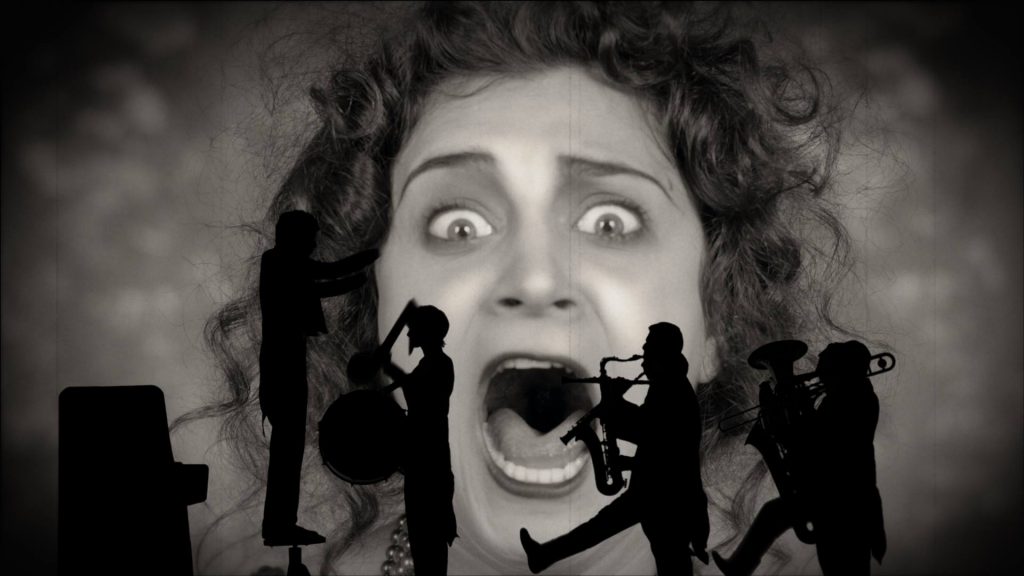
Nowadays we have cheap digital cameras that can produce great images: this is an extraordinary help for filmmakers with little to no money, but also for filmmakers who can rely on bigger budgets and at some point feel the need to experiment a bit more and want to get good aesthetics without spending (too much) money on personal projects no one wants to invest into.
This is a particularly exciting aspect of the times we are living: affordable and great equipment can be easily purchased and tiny projects can finally see the light of day. If nobody invests in a project you strenuously believe into, you can potentially make it happen yourself, while being aware of all the practical limitations you will likely have to face.
I am also an illustrator, and I know that different tools are relevant up to a certain degree: watercolours and oils are indeed very dissimilar, but a great watercolour painting will always shine over a bad oil one. And viceversa.
I am saying this because – at the end of the day – it is never about the camera. It is about how we are using it and what we are going to tell through it.
We can make a perfectly engaging feature film on a mobile phone, which has been done successfully many times.
As a filmmaker, the only real thing you have to worry about is knowing the advantages and the limitations of the support you are going to use and let it shape your style.
Shooting on a mobile thinking to reproduce classic cinema’s lush cinematography would be stupid; instead, study the capabilities of that specific camera and try to understand what can come out of it. This is why the concept behind The Blair Witch Project was brilliant: they knew they had no money and they could hardly afford a large crew and equipment; they knew they had likely to rely on their own cast to get the shooting done, possibly resulting in shaky and bumpy shots. That is why they turned to the ‘found footage’ stratagem and – from this very point of view – the whole operation was genius, besides what one would think of the artistic qualities of that feature.
I don’t think the evolution of technology helps you evolve as a filmmaker, but it certainly gives you a chance to put up with new frontiers and artistic experiments. It enhances your creative spirit. My suggestion would be to try testing as many and as diverse gears as possible.
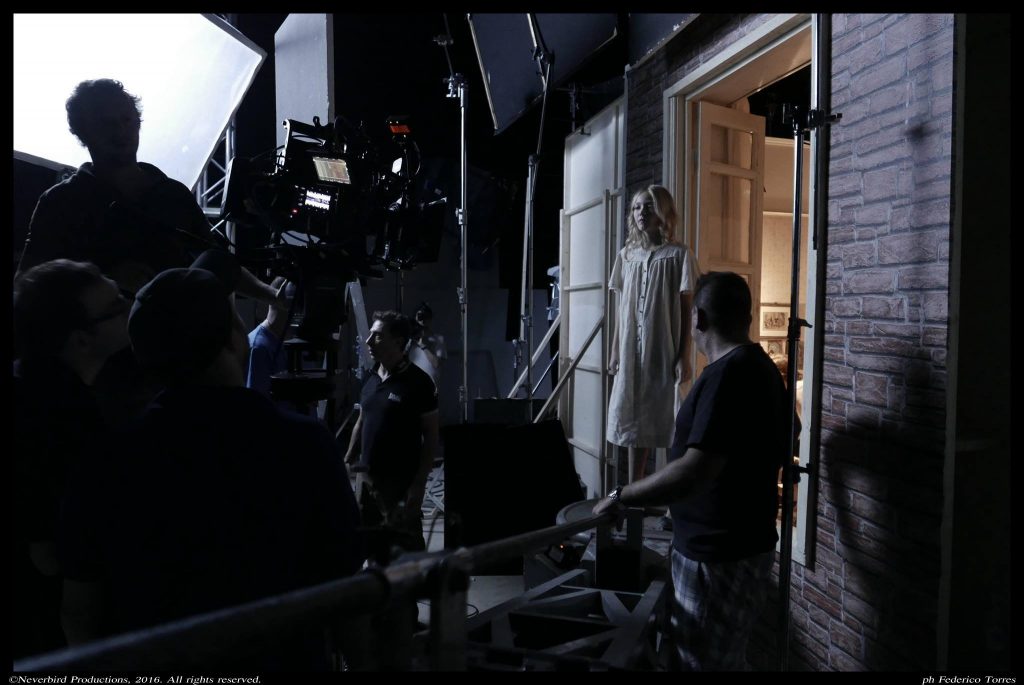
Some of my works were shot with digital cameras, and some of those (especially at the beginning of my career) were not even great cameras. Together with my collaborators, we put great care in colour grading and sometimes we finalized the projects adding some film layers over it.
Lots of people still think to this day that we shot such projects on film, but we didn’t. And who am I to destroy their beautiful illusion?
Back in film school we used to shoot our exercises on 16mm film. I still remember the excitement I felt when the processed film came back from the lab. It was thrilling, a sensation similar to the anticipation children feel on Christmas morning. It was electrifying and terrifying at the same time, because there was always the risk of having screwed things up and you wouldn’t find out until you managed to watch the developed footage.
We had rather noisy bolex cameras, which made it impossible for us to record sound live. We had to rely exclusively on the visual telling of our stories, on making sure that the audience would get the narrative through the moving images alone.
Out of necessity, we had to create and shoot silent films of sorts: that is the best way to learn the art of filmmaking, in my opinion; Cinema is exactly that: a story told through images in motion.
Looking back if there is once piece of advice you would give yourself as the filmmaker embarking on his career what would it be?
I would tell myself to learn to wait and to have patience, that things are going to happen. And, more importantly, I would invite myself to learn developing another talent besides the artistic one: the talent of never giving up, no matter what.
I always tell that to my students in filmmaking classes.
I often hear people – especially within showbusiness – saying that they gave themselves a specific amount of time to ‘make it’, to ‘break into the industry’.
I think it is fine, anyone should do what they think is best for them. But the film industry is tricky, and two filmmakers with equal amounts of talent might reach ‘success’ at very different times: one might ‘make it’ in a few months and another might get 20 or more years to get where he/she wants to get. And the ones who struggle for years before getting substantial (if any) results and recognition are the vast majority.
My suggestion would be this: before giving yourself a deadline to try out and make it, ask yourself what your life is going to be if you put those ambitions aside forever. If the answer is “I am going to live in a state of constant regret and I’m probably going to die of it”, then you know you must keep trying until you get what you want. It is not going to be easy, far from it. The voices in your head could be torturing and devastating. But experience after experience, struggle after struggle, brick after brick you are likely going to pave your way.
What are you hoping to achieve through your story-telling and your work as a director?
My wish is to keep growing and getting better and better at this profession.
What I love about being a director and about the art of storytelling it implies is the potential versatility of the craft: you can always try new paths, tell new stories.
If you possess a personal voice it will inevitably come out and always be there, it will be that particular something that your audience will recognize.
You can also decide to dive into unknown territories, new tales and new themes. Or to deal with the same themes, but giving yourself the challenge to present them from a different angle.
I was lucky I had a chance to pursuit an international career from the beginning, thanks to the music video “Ooh Yeah!” I made for Moby. That is something I always wanted to do: being able to reach an audience as diverse and as wide as one can possibly imagine. This is every director’s dream. Actually, it is any artist’s dream.
'Ooh Yeah' - Moby
However, in order to answer specifically to this question I need to tell an anecdote: I was working as an assistant director on Robert Carsen’s production of the opera Rusalka.
It is a beautiful fairy-tale opera by Dvorak, inspired by the tales Undine and The Little Mermaid. Carsen – whom I already defined earlier in this interview as my mentor – managed to create a magnificent interpretation, where a profound psychoanalytic interpretation blended with moments of pure theatrical magic.
His ability to mix intellectual elements with genuine entertainment fascinated me deeply, even more so when I experienced the transcendental power on the spectators: people from the most diverse backgrounds and knowledge sat with their jaws dropped, in utter awe. He had managed to reach a universal audience in the most noble way imaginable, by simply showing the beauty of Art and Culture in the classiest, most pristine way imaginable.
Every night – before the curtain raised on the first act – I went on the main stage and looked at the beautiful set design (by Michael Levine) from the first act and began to think about the impact this magical production had on the audience, myself included. I understood I finally had found a model and a goal (no matter how far and unattainable): that was the kind of art, the kind of quality I wanted to pursue and – eventually – produce one day. That was the kind of feelings I wished I could generate in my audience, one day.
I still evoke those magic moments on that stage: they are what helps me remember what I am hoping to achieve through my storytelling and through my work as a director.
Claire Bueno
Claire Bueno is a film journalist, presenter and interviewer, having moderated BAFTA, Royal Television Society (RTS), Women in Film and Television (WFTV), and Apple Store Q&As and hosted Comic Con panel talks. Claire is the founder of Premiere Scene Magazine and has had the privilege of interviewing esteemed artists including Tom Cruise, George Clooney, Brad Pitt, Sir Anthony Hopkins, Sigourney Weaver, Emily Blunt, Samuel L Jackson, James Cameron and Andy Serkis.
As a media coach Claire works with leading personal publicists, HBO, Netflix, Sky, ITV, Penguin Random House, the BFI, DDA, MacMillan and Premier, offering practical coaching sessions and safe environment for talent to perfect their interview technique before facing the press. She has extensive experience working with emerging and seasoned professionals and where English is not their first language.
Additionally, Claire is the producer of the critically acclaimed feature documentary CLEANIN’ UP THE TOWN: Remembering Ghostbusters and the upcoming TOO HOT TO HANDLE: Remembering Ghostbusters II.